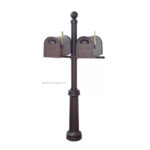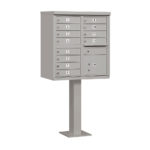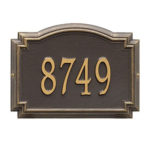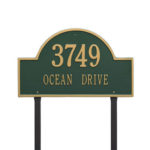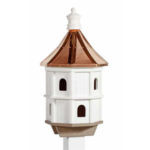Weathervanes
Full Size Weathervanes
Full size weathervanes include the ornament, the directionals (N-S-E-W), and the approx 18″ long 3/4″ rod everything assembles over. In some cases, when mounting the weathervane in a cupola 30″ or wider, you will need the 11″ extension rod in order to reach the mounting bracket below the peak inside most cupolas.
If you don’t have a cupola with an interior mount, you will need a mounting brackets.
If you need a cupola, please see our large selection under the CUPOLAS heading in our menu..

Rooster Weathervanes

Sailing Weathervanes


More Info This product has multiple variants. The options may be chosen on the product page
Eagle Weathervanes


More Info This product has multiple variants. The options may be chosen on the product page
Horse Weathervanes


More Info This product has multiple variants. The options may be chosen on the product page

More Info This product has multiple variants. The options may be chosen on the product page
Fish Weathervanes


More Info This product has multiple variants. The options may be chosen on the product page
Unique Weathervanes

Wild Animal Weathervanes

The History of Weathervanes
Weathervanes were indispensable to farmers as a tool to indicate wind directions. Originally, they were made having a simple arrow shape, balanced on a pivot that had north-south directions indicated on them.
Weather vanes were typical countryside equipment often seen to be spinning above a country barn and village farms. Weather vanes were rarely made at home. Instead, skilled local wood carpenters or iron and tinsmiths used to manufacture them. They played an important role in the lives of country people in keeping with their dependence on weather in their daily life. Ancient wooden weathervanes were mostly made of carved wood and painted with natural colors. The true artistry of these vanes often went un-noticed due to this countryside association. Weathervanes gradually evolved from a practical instrument to a decorative folk art as artisans came up with intricate and innovative patterns.
Gradually by the 1850s, weathervanes were produced in huge numbers from molds and artisans came up with advanced techniques to produce unique pieces. Wooden vanes perished faster due to constant exposure to elements. Iron and tin were a better alternative to make weathervanes as such materials were longlasting. Most ancient and commonly used designs for weathervanes were roosters. Apart from this, figurines of cockerel, cows, pigs and goats were also quite popular. Now, almost all animal forms are used to design weathervanes including human figures, birds, boats, vehicles and even bugs and insects. These ornament types are used to depict cultural, religious and patriotic themes through a variety of designs that could reflect country life.
Modern weathervanes are built with various other materials such as copper, brass, steel and cast aluminum to name a few. Modern weathervanes have found a place in the interiors of houses, on the walls and fireplace mantles as decorative items. Ancient weathervanes are now deemed as prized antique pieces and have been collectors’ favorites for decades.
Article Source: http://EzineArticles.com/?expert=Ross_Bainbridge





